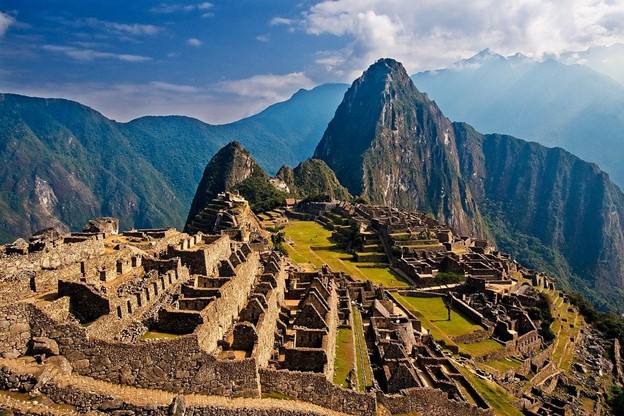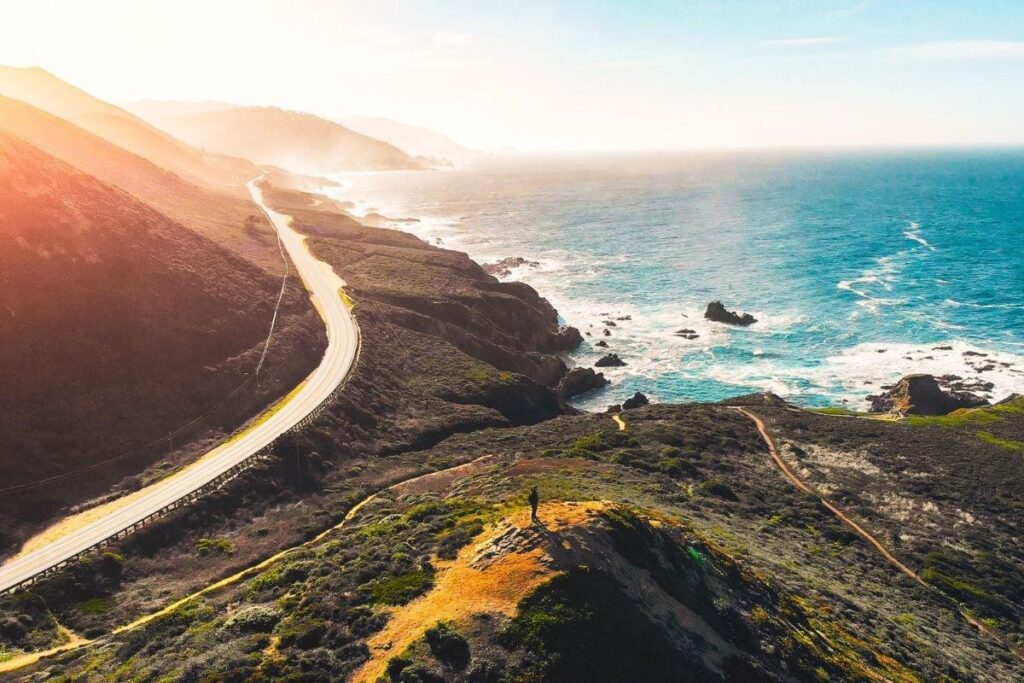Introduction
A. Mystique of Machu Picchu
Nestled high in the Andes Mountains, Machu Picchu exudes a mystique that captivates travelers from around the globe. The iconic Inca Citadel stands as a testament to ancient ingenuity, spiritual beliefs, and architectural brilliance, creating an aura of wonder and fascination.
B. Significance of the Inca Citadel
Machu Picchu holds profound significance as an archaeological marvel and a UNESCO World Heritage site. Its historical importance, coupled with its breathtaking setting, makes it a must-visit destination for those seeking to unravel the mysteries of the Inca civilization.
History and Discovery
A. Construction by the Inca Empire
Built by the Inca Empire in the 15th century, Machu Picchu served as a royal estate for Emperor Pachacuti. Its intricate stone structures, agricultural terraces, and strategic location on a mountain ridge showcase the advanced engineering skills of the Inca civilization.
B. Rediscovery by Hiram Bingham
Machu Picchu’s existence was largely unknown to the outside world until its rediscovery by American historian and explorer Hiram Bingham in 1911. The site’s unveiling marked the beginning of global fascination with the ancient Inca Citadel.
Architectural Marvels of Machu Picchu
A. Terraced Fields and Agricultural Techniques
Machu Picchu’s terraced fields demonstrate the Inca’s mastery of agricultural techniques. The innovative terracing allowed for efficient farming on steep slopes, showcasing the Inca’s ability to adapt to challenging landscapes.
B. Intihuatana Stone and Solar Alignments
The Intihuatana stone, a ritual stone associated with astronomical observations, reflects the Incas’ advanced understanding of solar alignments. Positioned to capture the sun’s rays during solstices, this stone serves as a testament to the spiritual and astronomical significance embedded in Machu Picchu’s architecture.
The Inca Trail: Journey to Machu Picchu
A. Popular Inca Trail Routes
The journey to Machu Picchu often involves traversing the Inca Trail, a network of ancient paths that wind through breathtaking landscapes. Popular routes like the Classic Inca Trail and the Salkantay Trek offer diverse scenery and cultural encounters.
B. Cultural and Natural Highlights Along the Trail
In addition to reaching Machu Picchu, the Inca Trail introduces trekkers to cultural highlights such as Inca ruins and indigenous communities. The trail’s natural beauty, ranging from high-altitude Andean landscapes to subtropical forests, adds a layer of richness to the journey.
Mystical Significance and Spiritual Connections
A. The Sacred Plaza and Temples
Machu Picchu’s Sacred Plaza, surrounded by temples and ceremonial structures, served as the spiritual heart of the citadel. The Temple of the Sun, Intihuatana, and the Room of the Three Windows reflect the Incas’ deep spiritual connections and religious practices.
B. Astronomical and Spiritual Beliefs of the Incas
The Incas’ astronomical and spiritual beliefs are embedded in Machu Picchu’s architecture. Alignments with celestial events, reverence for sacred mountains, and the integration of natural elements into religious practices highlight the profound connection between the Inca people and their environment.
Challenges of Conservation and Tourism
A. Environmental Impact and Preservation Efforts
The surge in tourism poses challenges to Machu Picchu’s preservation. Erosion, foot traffic, and environmental impact require ongoing conservation efforts, including trail maintenance, visitor education, and sustainable management practices.
B. Sustainable Tourism Practices at Machu Picchu
To address conservation challenges, sustainable tourism practices are being implemented. These include limiting daily visitor numbers, promoting responsible tourism behavior, and prioritizing eco-friendly infrastructure to ensure Machu Picchu’s longevity.
Practical Tips for Visitors
A. Best Times to Visit Machu Picchu
Choosing the best times to visit Machu Picchu involves considering weather conditions and avoiding peak tourist seasons. The dry season from May to October is generally recommended for optimal visibility and pleasant trekking conditions.
B. Ticketing and Guided Tours Information
Understanding the ticketing system and opting for guided tours enhances the visitor experience. Limited daily entry tickets and guided tours provide structured access, ensuring a more controlled and informative exploration of Machu Picchu.
Capturing Machu Picchu: Photography Tips
A. Iconic Views and Strategic Locations
Photographing Machu Picchu requires capturing its iconic views from strategic locations. Sunrise at the Sun Gate, viewpoints like Huayna Picchu, and perspectives showcasing the citadel against the backdrop of lush mountains are popular choices.
B. Preserving the Site’s Integrity Through Photography
Responsible photography at Machu Picchu involves respecting preservation guidelines. Avoiding climbing on structures, refraining from touching ancient stones, and following park regulations contribute to preserving the site’s integrity.
Mysteries and Unanswered Questions
A. The Purpose of Machu Picchu’s Construction
Despite extensive research, the exact purpose of Machu Picchu’s construction remains a mystery. Theories range from a royal estate to an astronomical observatory, adding an air of intrigue to the site.
B. Cultural Practices and Ceremonies at the Citadel
Understanding the cultural practices and ceremonies held at Machu Picchu provides insights into the Inca way of life. The enigmatic nature of certain rituals and ceremonies continues to spark scholarly curiosity and exploration.
Experiencing Machu Picchu Today
A. Visitor Experience and Guided Tours
Today, visitors can experience Machu Picchu through guided tours that unravel its history, significance, and architectural marvels. The visitor experience is enriched by knowledgeable guides who provide context and narratives.
B. Immersive Cultural and Educational Programs
Immersive cultural and educational programs offer deeper insights into Machu Picchu. Workshops, lectures, and interactive experiences allow visitors to connect with the rich history and cultural heritage of the Inca Citadel.
Conclusion
A. Recap of Machu Picchu’s Marvels
In conclusion, Machu Picchu stands as an awe-inspiring testament to the ingenuity, spirituality, and architectural prowess of the Inca civilization. Its marvels, both historical and natural, continue to draw explorers and enthusiasts seeking to unravel its mysteries.
B. Invitation to Explore the Inca Citadel
As we recap the wonders of Machu Picchu, the invitation is extended to all who harbor a spirit of adventure and a curiosity for ancient civilizations. Explore the Inca Citadel, traverse the paths of the Inca Trail, and immerse yourself in the captivating mystique of Machu Picchu.
FAQs
What is the significance of the Intihuatana stone at Machu Picchu?
- The Intihuatana stone is believed to have served astronomical and spiritual purposes, possibly functioning as an observatory to track celestial events.
Are there limitations on daily visitor numbers to Machu Picchu?
- Yes, there are limitations on daily visitor numbers to Machu Picchu to preserve the site. It is advisable to book entry tickets in advance.
Can visitors climb Huayna Picchu for panoramic views of Machu Picchu?
- Yes, visitors can climb Huayna Picchu for panoramic views of Machu
Picchu, but access is limited, and a separate entrance ticket is required.
What are the best times for trekking the Inca Trail to Machu Picchu?
- The dry season from May to October is considered the best time for trekking the Inca Trail, offering favorable weather conditions and clear visibility.
Are there educational programs available for a deeper understanding of Machu Picchu?
- Yes, there are educational programs and workshops at Machu Picchu that provide a deeper understanding of its history, cultural significance, and architectural marvels.

